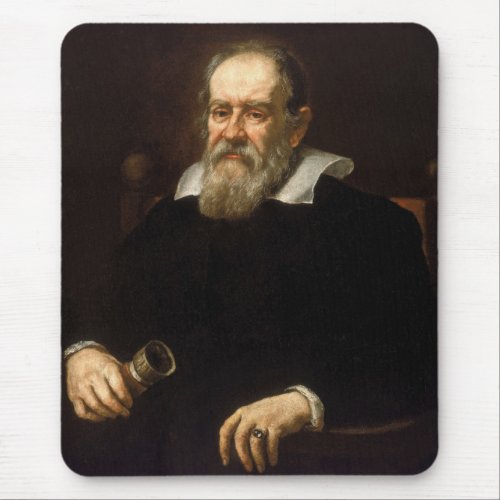Galileo Galilei: Father of Science & Astronomy Mouse Pad



Justus Sustermans, a Flemish artist, captured Galileo Galilei in oil paint around 1636. The portrait depicts the renowned scientist in his later years. Seated in a chair, his white beard and dark clothing convey a sense of age and experience. A telescope, the instrument that revolutionized his life's work, rests prominently in his hands. The muted background allows the viewer to focus on Galileo's determined expression and the object that became synonymous with his scientific journey. --- This portrait is more than just a likeness; it's a window into a pivotal moment in Galileo's life. By 1636, he had already made groundbreaking astronomical discoveries using the telescope. He observed mountains on the Moon, discovered Jupiter's moons, and witnessed the phases of Venus. These revelations challenged the prevailing Earth-centered model of the universe, placing him at odds with the established authorities. --- Galileo Galilei: A Life Devoted to Science Born in Pisa, Italy, in 1564, Galileo's life was a testament to unwavering scientific curiosity. Though initially enrolled in medicine, his passion shifted towards mathematics and physics. He became a professor at the University of Pisa, where he challenged long-held Aristotelian ideas on motion through experimentation and observation. --- The invention of the telescope in 1608 marked a turning point. With his innovative spirit, Galileo significantly improved the design and magnification of the instrument, transforming it into a powerful tool for astronomical exploration. His observations shattered centuries-old beliefs about the cosmos: the Moon wasn't a perfect sphere, Jupiter had moons, and Venus exhibited phases; all evidence supporting a Sun-centered solar system. --- Galileo's discoveries attracted both acclaim and scrutiny. His heliocentric views contradicted the Church's interpretation of scripture, leading to accusations of heresy. Forced to recant his beliefs in 1633, he spent his remaining years under house arrest. --- Despite the persecution, Galileo's contributions were undeniable. He laid the groundwork for classical mechanics with his work on motion, championed the scientific method through experimentation and observation, and challenged the established scientific order. His courage in the face of opposition cemented his place as a pivotal figure in the Scientific Revolution. --- This portrait of Galileo, then, is a powerful symbol. It represents not just an elderly scientist, but the unwavering pursuit of knowledge, intellectual courage, and the enduring impact of scientific progress on our understanding of the universe.


